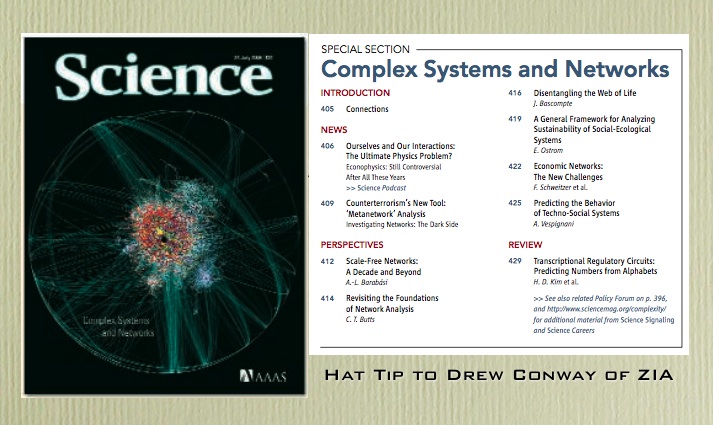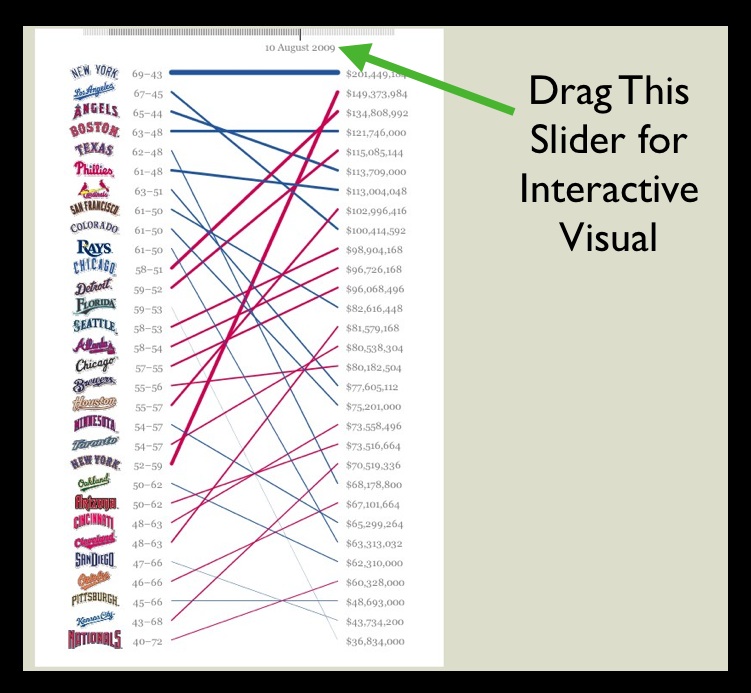Death and Taxes is an infographic classic created by Jess Bachman. The new version for 2010 is now available. Place the cursor over the graphic and wait for the {+,-} to show up. Then, zoom in read any part of the poster. Click and hold to move side to side. For more information or to order a poster … click through to Wall Stats. It is worth the click through as Wall Stats features a fully searchable legend which will autozoom on major executive agencies.
–
Power Laws, Preferential Attachment and Positive Legal Theory [Part 2] [Repost]
As was stated in Part 1 of this thread, it is by no means a given that the statistical artifact displayed above would appear. Namely, such large scale patterns need not assume this flavor as many social and physical systems feature substantially different properties.
For purpose of generating an empirically grounded theory of American Common Law development … explaining these artifacts would seem to critical. Fortunately, with respect to the above pattern, there exist a definable set of generative processes plausibly responsible for producing what is displayed. While certainly not the only generative process responsible for a power law, the preferential attachment model, first outlined in the physics literature by Barabási & Albert, is among the likely candidates.
Confronting much of the extant literature, query as to whether a closed form equilibria based analytical apparatus (punctuated or otherwise) is up to the task of describing the relevant dynamics? If anything, the distributions displayed above provide first-order evidence of a system which is likely to feature dynamics of a non-linear flavor. Indeed, while significant work still remains, the weight of available evidence indicates Law is a Complex Adaptive System. As such, we believe it would be appropriate to leverage the methods typically reserved for the study of complexity. For purposes of generating positive legal theory, we believe agent based models, dynamic network analysis and other methods of computational social science offer great potential. We encourage scholars to consider learning more about these approaches.
Visualizing Dynamic Networks with Python, Igraph, and SONIA
igraph2sonia Example 1 from michael bommarito on Vimeo.
When it comes to quickly motivating a point or engaging students in a classroom, one of the most effective tools is visualization. Not only do movies provide fun and excitement, but they also allow viewers to leverage the abilities of the visual cortex to infer dynamics and patterns in the animated system.
For our recent research, dynamic graphs are the type of system of interest. As I’ve covered before, Python is my language of choice for most programming tasks. Furthermore, Python is a very accessible language, even for beginners. However, when it comes to visualizing dynamic networks, we need another tool. Our tool of choice is SONIA, the Social Network Image Animator.
I thought I’d provide a helpful little function to generate SONIA input files from igraph objects, along with a few examples.
This function takes as input an igraph.Graph object and a file name to store the SONIA output in. Every vertex in the Graph object should have a time attributed specified, either simply as an integer indicating the start time, or as a tuple or list of the form (startTime,endTime). Check out the following two examples if you need more guidance. Both examples visualize the construction of a periodic lattice. However, in the second example, nodes decay after some random time. Make sure not to miss the second video at the bottom of the post!
igraph2sonia Example 2 from Michael J Bommarito II on Vimeo.
Sea Dragon Visualization of the American Legal Academy
Here is another visual run through the SeaDragon Visualization from Microsoft Labs. Similar to the Title 17 United States Code visual from earlier in the week, one can zoom in and out. Using the button in the far southeast corner it is possible to generate a full screen visual of the network.
Pervious posts discussing this visualization are located here and here. In addition, results of our model of diffusion on the network are located here while an interactive version of the agent based model generated in Netlogo is located here. For those interested in the full draft … it is entitled Reproduction of Hierarchy? A Social Network Analysis of the American Law Professoriate.
Copyright → Title 17 U.S. Code w/ Sea Dragon From Microsoft Labs
This is part of our ongoing visualizations of the United States Code. For previous posts visualizing other portions of the code see Title 26 Tax and Title 11 BK. So, we wanted to test out the new Sea Dragon Visualizer from Microsoft Labs and thought Title 17 Copyright would be a fun way to give it a go. In this visual, each of the chapters under Title 17 is separately colored.
To use the visual, start in the center with the large label “Title 17 U.S.C.” and traverse the graph all the way out to any section or subsection. Sea Dragon should allow the user to smoothly zoom in and read any node. We love the interface.
In our view, the Full Screen Visual is the best. You can access it by clicking the Full Size Button on the far right. Also, if for whatever reason you zoom in too far, just use the Home Button to go back to the Full Image. Enjoy but note SeaDragon relies upon Silverlight and Javascript (so you might need to install this).
The Law Clerkship Tournament : The Expanded Edition
Our multipart series on the clerkship tournament continues above with an expanded edition of our underlying dataset. It is important to note that we do not threshold for the number of graduates per school. Specifically, we do not just divide by the number graduates per school because we do not have any particular theoretic reason to believe that placements linearly scale to differences in size of graduating classes. In other words, given we do not know the proper functional form — we just offer the raw data for your consideration. For those interested in other posts, please click here for the law clerks tag.
In the previous circuit/district post, we focused upon the “top” 15 schools as ranked by an older version of US News. When we expand the analysis to consider a wider slice of institutions, two schools standout — Texas and Notre Dame. Basically, the arbitrariness of the prior cut off we imposed did not really do justice to these institutions … this wider view provides a deeper indication of their standing relative to other institutions.
Law in Structure of Academic Disciplines [Repost]

This article offers a very interesting insight into the structure of academic disciplines. Using a variety of sources, the authors collected nearly 1 billion interactions from scholarly web portals including Thomson Scientific, Elsevier, JSTOR, etc.
Residing between Economics, Sociology and International Studies, notice the location for legal studies in the upper center portion of this screen print.
The Full Size visualization as well as relevant analytics are available within the paper. Among other things, the approach undertaken by Johan Bollen, Herbert Van de Sompel, Aric Hagberg, Luis Bettencourt, Ryan Chute, Marko A. Rodriguez & Lyudmila Balakireva provides an alternative view of the current structure of the academic disciplines from that offered in existing bibliometric studies.










